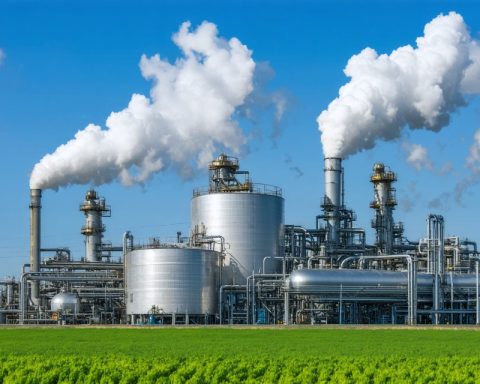In a groundbreaking move destined to reshape the steel industry, Gensol Engineering has partnered with Matrix Gas & Renewables Consortium to launch India’s inaugural green hydrogen-driven steel production facility. This pioneering project marks a significant milestone, utilizing 100% renewable energy to fuel the steel manufacturing process, heralding a new era of sustainable industrial practices in the country.
Key Motivation
This ambitious initiative is one of three pilot projects falling under the National Green Hydrogen Mission, backed robustly by MECON, the Ministry of Steel, and the Ministry of New and Renewable Energy. This collaboration aims to position India as a leader in clean energy technologies while drastically reducing carbon emissions associated with traditional steel production methods.
Investment and Support
With a financial plan allocating INR 321 crore (approximately USD 38 million), this venture receives substantial support in the form of a 50% capital expenditure incentive from the Indian government. The funding underscores the commitment to transitioning towards environmentally friendly industrial practices.
Leading Voices
The leadership team at Matrix Gas & Renewables, particularly Chirag Kotecha, the Whole-time Director, shows unwavering enthusiasm for this initiative. The project aligns with their vision of transforming India into a hub of innovative and sustainable steel production, laying the foundation for future endeavors in green hydrogen application.
This bold step represents not only a transformation in the methods of steel production but also reflects a significant shift towards sustainable energy solutions, aligning with global efforts to combat climate change.
The Future of Steel: Green Hydrogen’s Global Impact
The move toward green hydrogen-driven steel production in India is not merely a technological advancement; it signifies a pivotal transformation with international implications. Beyond its groundbreaking initiative in India, this approach is part of a broader shift towards sustainable industrial practices that could revolutionize economies, communities, and global trade.
How Does Green Hydrogen Influence Everyday Lives?
Implementing green hydrogen in steel production has the power to dramatically lower carbon emissions globally, directly impacting public health by reducing air pollution. Cleaner air leads to a decrease in respiratory illnesses and other pollution-related health issues, improving the quality of life for communities worldwide.
Moreover, the shift can result in lower energy costs in the long run. By decreasing reliance on fossil fuels and increasing energy efficiency, industries can offer more competitive pricing. Consumers may eventually see reduced costs for goods ranging from automobiles to household appliances, where steel plays a crucial role.
Impact on Global Communities and Economies
This initiative positions India as a leader in sustainable technologies, potentially inspiring other countries to follow suit. As nations seek to meet their climate goals under international agreements like the Paris Accord, adopting green hydrogen could become an economic imperative, fostering international cooperation and innovation.
Communities around production facilities stand to benefit significantly. The establishment of green hydrogen plants can create a wide range of jobs, from technical roles in engineering to positions in manufacturing and maintenance. This job diversification supports local economies and stimulates regional development.
Controversies and Critical Questions
While the prospects are promising, the transition to green hydrogen is not without its controversies. Critics question the economic feasibility, given the high initial investment and technology costs. They argue: Could these projects lead to increased steel prices, offsetting potential consumer benefits?
Furthermore, there is a lingering question regarding the environmental impact of producing green hydrogen at scale. Large-scale water use for electrolysis and land requirements for renewable energy sources can potentially disrupt ecosystems.
Interesting Facts About Green Hydrogen
– Energy Efficiency: Green hydrogen production is about 70-80% efficient, meaning some energy is lost in the conversion process.
– Storage and Transport: Hydrogen can be stored and transported in multiple ways, including as gas or liquid, each posing different challenges and benefits.
– Versatility: Beyond steel production, green hydrogen can decarbonize other sectors, such as transportation, providing clean fuel alternatives for vehicles.
The Road Ahead: A Global Implication
The successful implementation of green hydrogen-driven projects in India could serve as a blueprint for global strategies to combat climate change, making it a critical area of focus for policymakers and industry leaders worldwide.
For those interested in exploring more about sustainable energy solutions, you can visit International Energy Agency (IEA) and World Steel Association for further insights.













